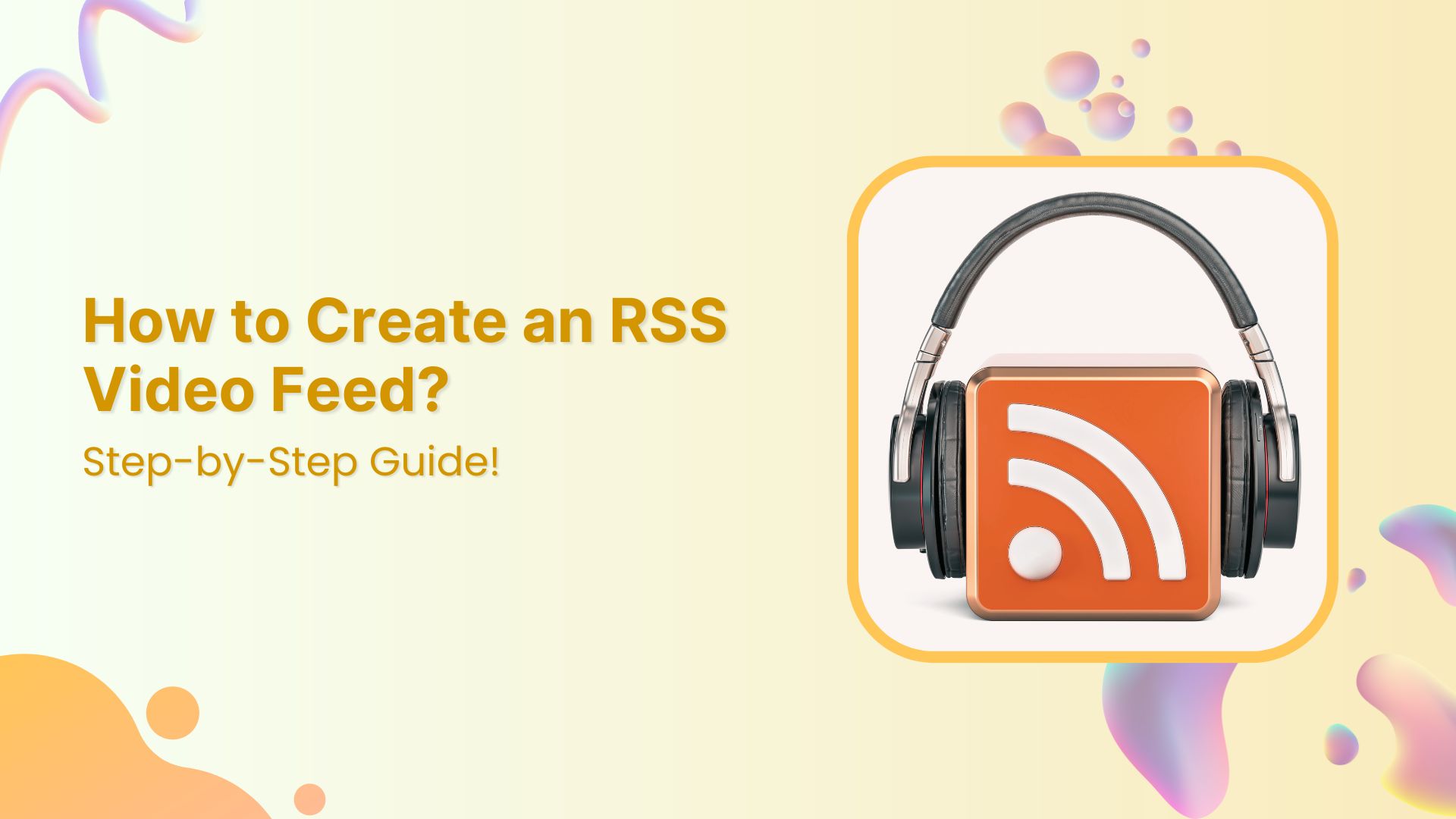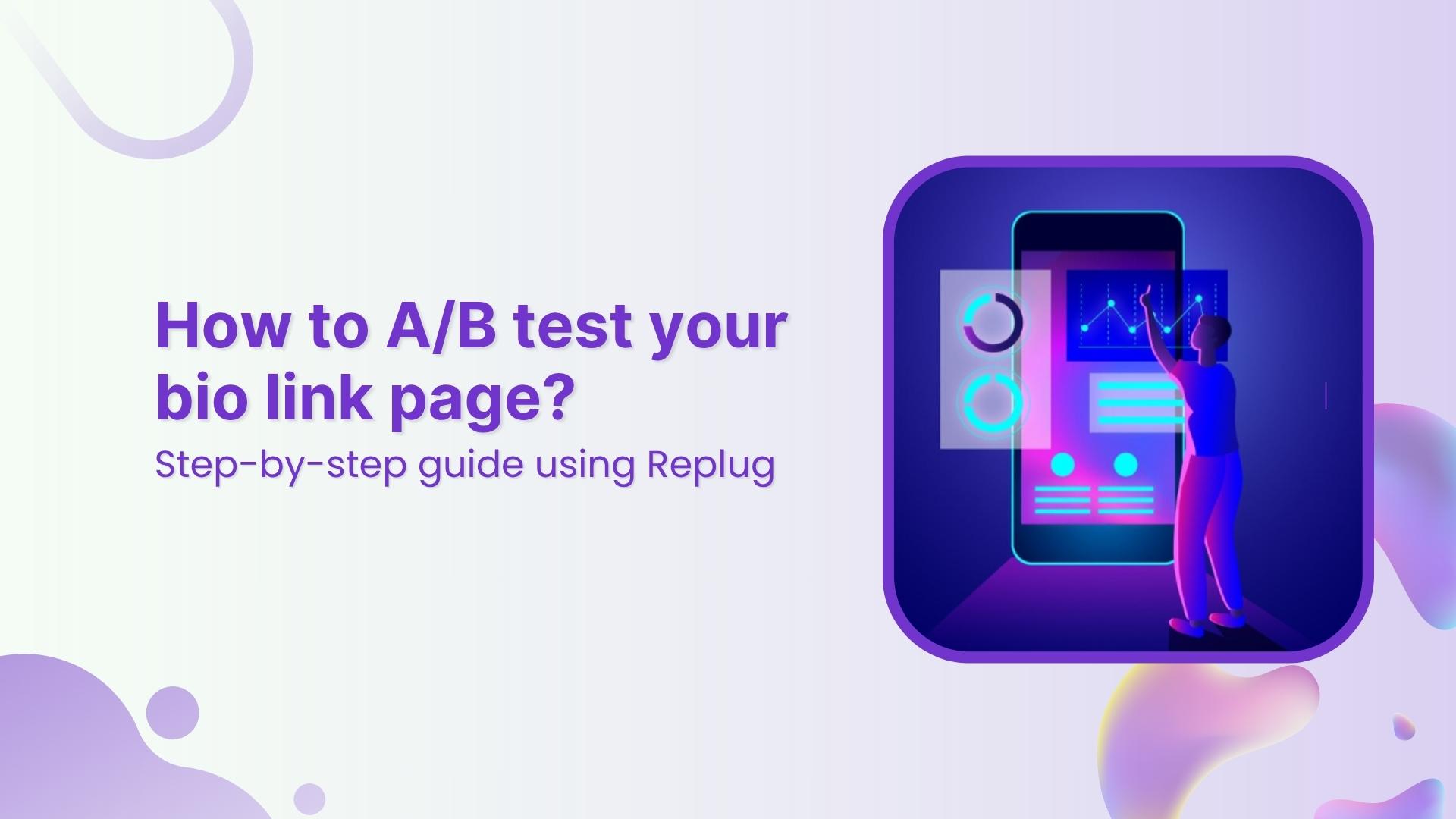In this age of information overload, staying connected with your audience requires innovative approaches. One such method is using the power of RSS feeds to distribute your video content effectively. In this guide, we’ll explore the process of creating an RSS video feed using Replug, a versatile tool designed to enhance your online presence and streamline content distribution.
Let’s delve into the steps to utilize Replug’s capabilities and unlock the potential of your video content.
What is an RSS video feed?
An RSS video feed is a structured XML file that contains information about video content, such as titles, descriptions, publication dates, and URLs. It allows content creators to syndicate video content in a standardized format that various platforms and applications can easily consume.
Think of it as a channel through which your video content is distributed to subscribers or viewers who use RSS feed readers or aggregators. Instead of manually visiting websites or platforms to check for new videos, users can subscribe to RSS video feeds and receive updates automatically whenever new content is published.
How to create an RSS video feed in Replug?
To create an RSS video feed using Replug, you’ll need to add the URL of the video content you want to include in your RSS feed. This could be the direct link to your videos hosted on platforms like YouTube, Vimeo, or your website.
Here’s how to create an RSS video feed using Replug:
Step 1: Log in to your Replug account. If you’re new, sign up for a free account to get started.
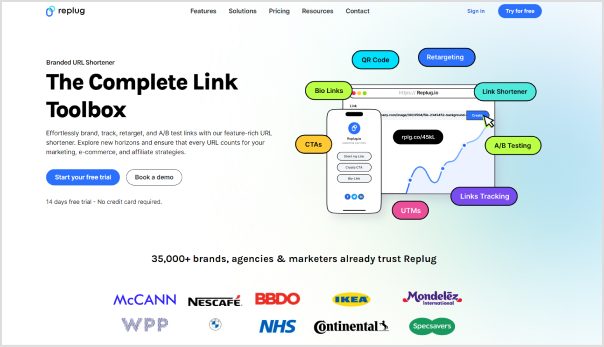
Step 2: Once logged in, navigate to the dashboard area. Hover over the “Manage” tab and select “RSS Automation” from the dropdown menu.
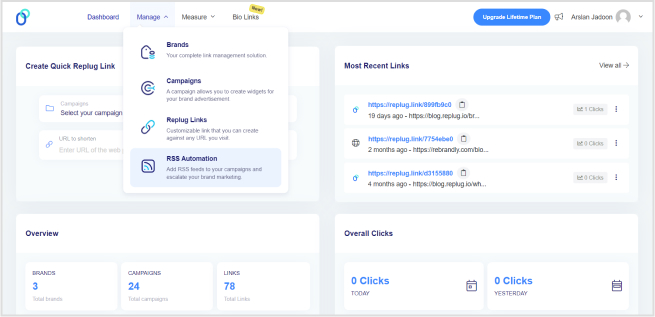
Step 3: In the RSS Automation section, find the “Add RSS Feed” button at the top left corner of the screen. Click on it to proceed.
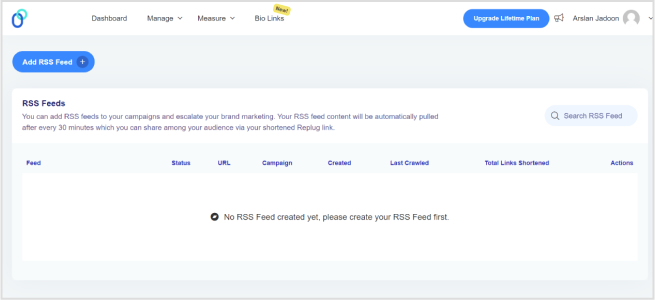
Step 4: A pop-up window will appear asking you to select your campaign and enter the RSS feed URL. Choose the campaign you want and paste the RSS video feed URL into the provided field. Click “Add” to complete this step.
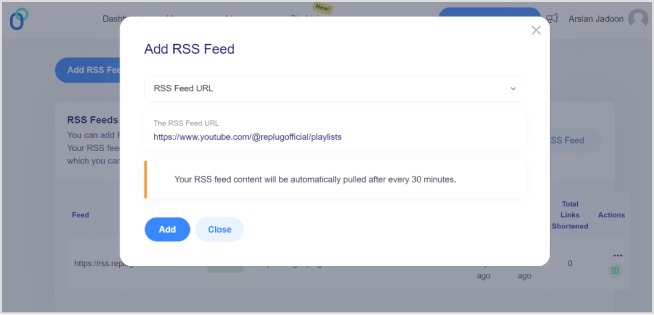
After following these steps, your RSS feed will be successfully created. You can then copy the RSS feed URL provided and add it to any third-party platform or use it to distribute your content.
Additionally, once your RSS feed is created, you have several actions you can take:
- Edit: Update or change the added RSS feed whenever necessary.
- Re-crawl: Instantly re-crawl your entire RSS feed to fetch any new links that have been added.
- Preview: View a list of posts from the RSS feeds that have been converted.
- Remove: Remove your RSS feed to create a new one or perform other actions.
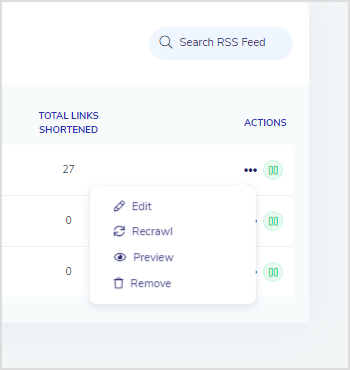
These options allow you to manage and customize your RSS feed widget according to your preferences and needs.
Also read: How to Automatically Shorten URLs in an RSS Feed?
RSS video feed best practices:
Creating an RSS video feed is a powerful way to distribute your video content to a wider audience. Here are some best practices to ensure your RSS video feed is effective:
Provide high-quality content:
The success of your RSS video feed depends on the quality of your video content. Make sure your videos are well-produced, engaging, and relevant to your target audience.
Optimize video titles and descriptions:
Use descriptive and compelling titles and descriptions for your videos. This helps users understand what your videos are about and encourages them to click and watch.
Include thumbnails:
Thumbnails are like the cover of a book – they can significantly impact whether someone decides to click on your video. Choose eye-catching thumbnails that accurately represent your content.
Add metadata:
Include relevant metadata such as categories, tags, and keywords to help users discover your videos through search engines and RSS feed readers.
Publish consistently:
Maintain a consistent publishing schedule to keep your audience engaged and coming back for more. Consistency helps build trust and loyalty with your audience.
Optimize feed format:
Choose an RSS feed format that is compatible with popular feed readers and platforms. This ensures your feed is accessible to the widest possible audience.
Promote your feed:
Promote your RSS video feed on your website, social media channels, and other relevant platforms to attract subscribers and increase visibility.
Monitor performance:
Use link-tracking tools to track the performance of your RSS video feed. Monitor metrics such as subscriber count, click-through rates, and engagement to identify areas for improvement.
Stay compliant:
Make sure your video content complies with relevant laws and regulations, such as copyright and privacy laws. Respect copyright and licensing agreements when including third-party content in your videos.
Engage with your audience:
Encourage feedback, comments, and discussions around your video content. Engaging with your audience helps build a sense of community and loyalty.
FAQs
What is an RSS video feed?
An RSS video feed is a standardized format for distributing video content. It works by providing a structured XML file containing information about videos, such as titles, descriptions, and links, which can be read and processed by feed readers or aggregators.
Why should I use an RSS video feed for distributing my video content?
Using an RSS video feed allows you to syndicate your video content across various platforms and reach a wider audience. It provides a convenient way for users to subscribe to your updates and automatically receive new video content as it’s published.
What platforms or devices support RSS video feeds?
Most modern web browsers, feed readers, and media players support RSS video feeds. Additionally, many content management systems and video hosting platforms offer built-in support for generating and consuming RSS video feeds.
How do I create an RSS video feed for my video content?
You can create an RSS video feed using tools like Replug or by manually generating an XML file that includes information about your video content, such as titles, descriptions, and URLs.
Can I customize the appearance of my RSS video feed?
The appearance of an RSS video feed is typically determined by the feed reader or aggregator used to view it. However, you can include metadata and thumbnails in your feed to enhance its visual presentation.
What types of video content can I include in an RSS video feed?
You can include any type of video content in an RSS video feed, such as tutorials, vlogs, product demos, and promotional videos.
How often should I update my RSS video feed?
It’s recommended to update your RSS video feed regularly with new content to keep your audience engaged. The frequency of updates will depend on your content strategy and publishing schedule.
You may also like:
Bio-Link: Smartest Way To Get Leads From Social Media
10 Best Bio Link Tools For 2024| Reviews & Pricing



























